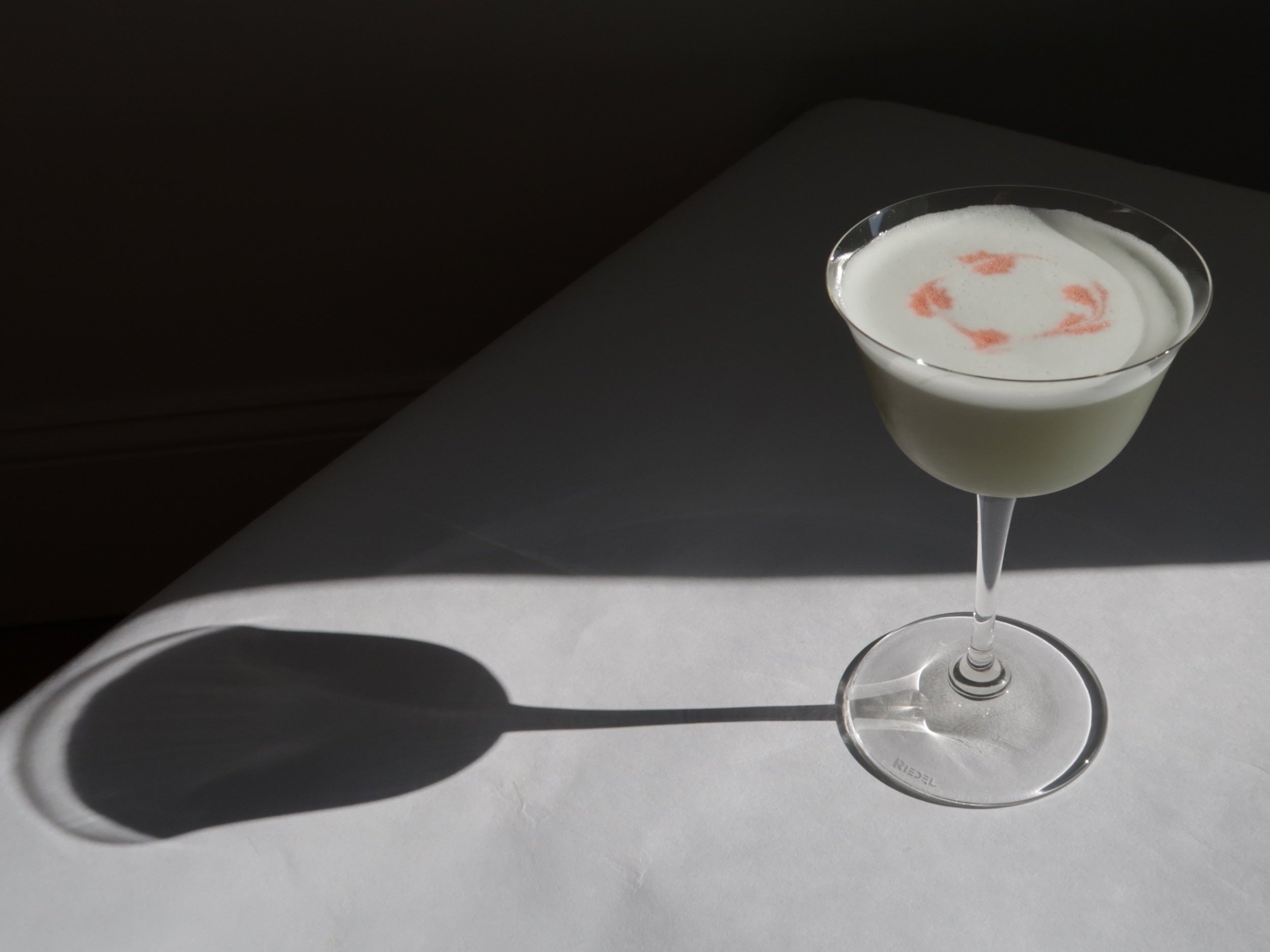My Lady of Middlesex’s Syllabub
Syllabub is a wine- or cider-based, cream- and egg white-laced drink dating to the Elizabethan period. I added gin for a little Christmas pine flavor and opted for honey over sugar, which has a beautiful conversation with the rose, lemon, and cinnamon. Syllabub, and with its cousin posset, are often cited as predecessors to flip, eggnog, and Tom & Jerry. Over time, syllabub became more and more solid, morphing into an alcohol-laced dessert rather than a drink.
Snap-dragon
Also known as flap-dragon, this Elizabethan game involves trying to pick dried fruit and nuts out of a bowl of flaming brandy. Yes, it’s dangerous and, yes, it was played by children (as well as adults) from the sixteenth century through the Victorian period. It’s closely associated with the Christmas season and, in the United States, it also became a common amusement on All Hallows’ Eve.
Wassail
‘Wassail’ comes from the Middle English wæs hæil, and from the Old Norse before that ves heill meaning something akin to “be you in good health.” This classic medieval beverage, typically made from a combination of cider, ale and, later, fortified wine, has great significance in English drinking history and was popular during the Tudor period. ‘Tis truly supreme with the eggs, but if you must omit them for dietary reasons, ‘twill be delicious all the same.
Capitaine of Mischeefe (large format)
Back in 2020, I developed a series of three drinks for my Lords of Misrule series, including this recipe, which was originally a single-serving punch. Its ingredients tell the story of the late Tudor (i.e. Elizabethan) period, when the English became the dastardly colonizers we now know them to be. In this large-format version, brandy (either Spanish or French) comes together with funky Batavia arrack (the original punch base!), oxidized sherry, Swedish Punsch (a punch within a punch), allspice dram, tea, and sugar for a punch with notes of dried fig, tropical fruit, nuts and spices, and a hint of smokiness.
Abbot of Unreason
This is third in my Lords of Misrule series: the Abbot of Unreason, which the Scottish title for the Lord of Misrule. I’m very interested in a couple of aspects of this drink as broader themes in cocktail history and drink development. 1. Fizzy drinks that have a stirred, rather than shaken, base; a subgenre for which it’s far less easy to find examples in the Olde Books 2. How we can take frequently-used flavor combinations (orange and chocolate, banana-nut, apple and cinnamon, etc.) and use them as subtle underpinnings for complex cocktails.
Capitaine of Mischeefe
“Capitaine of Mischeefe” was another term for the Lord of Misrule, who presided over festivities from Christmas Day through Twelfth Night, and sometimes all the way through Candlemas (in early February). This is the second in my Lords of Misrule series: a punch that tells the story of the expansion of products due to colonization by European nations that occurred during the 17th and 18th centuries.
Lord of Misrule
This was the eponymous cocktail from my Lords of Misrule series (December 2020). It celebrates old-fashioned flavors of the season and, by extension, references the late medieval / early modern English and Scottish Christmas traditions. This batch recipe is meant to be divided into small bottles and adorned with little tags, or to be mixed and kept on your bar so that anyone who comes into your home during the holiday season may partake in a festive cocktail.
Queen of Scots
When I was developing this drink for a potential slot on Gigantic’s 2020 spring menu (sadly reopening was postponed until 2021), I kept thinking of the nursery rhyme “Mary, Mary, Quite Contrary,” because it’s all about spring flowers and honeybees. And because I’m about 500 years old. Anyway, this song is probably about Mary Tudor, but it may also be about Mary Stuart, commonly known as the Queen of Scots, who was eventually beheaded by her cousin Elizabeth I.








